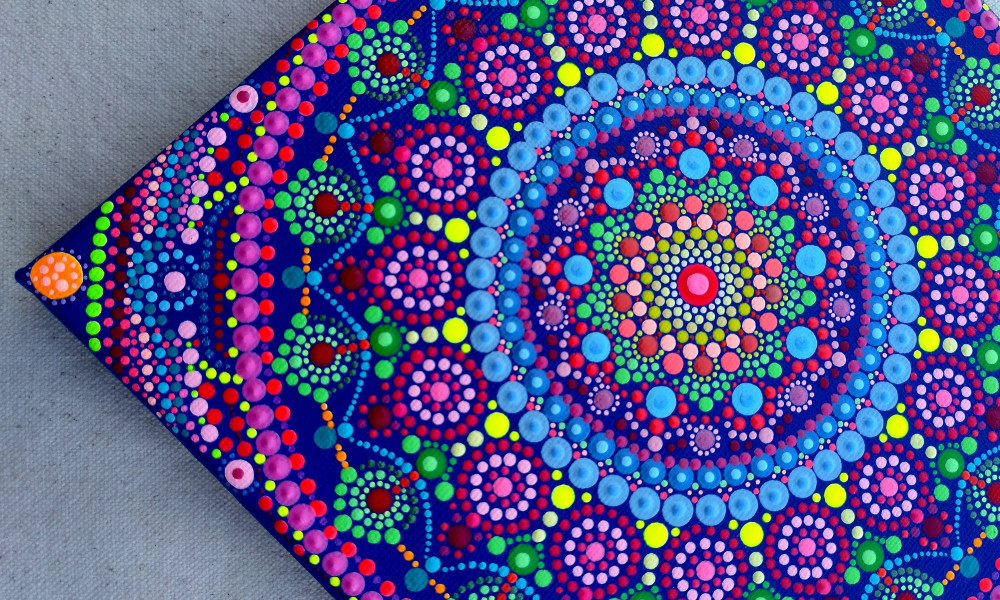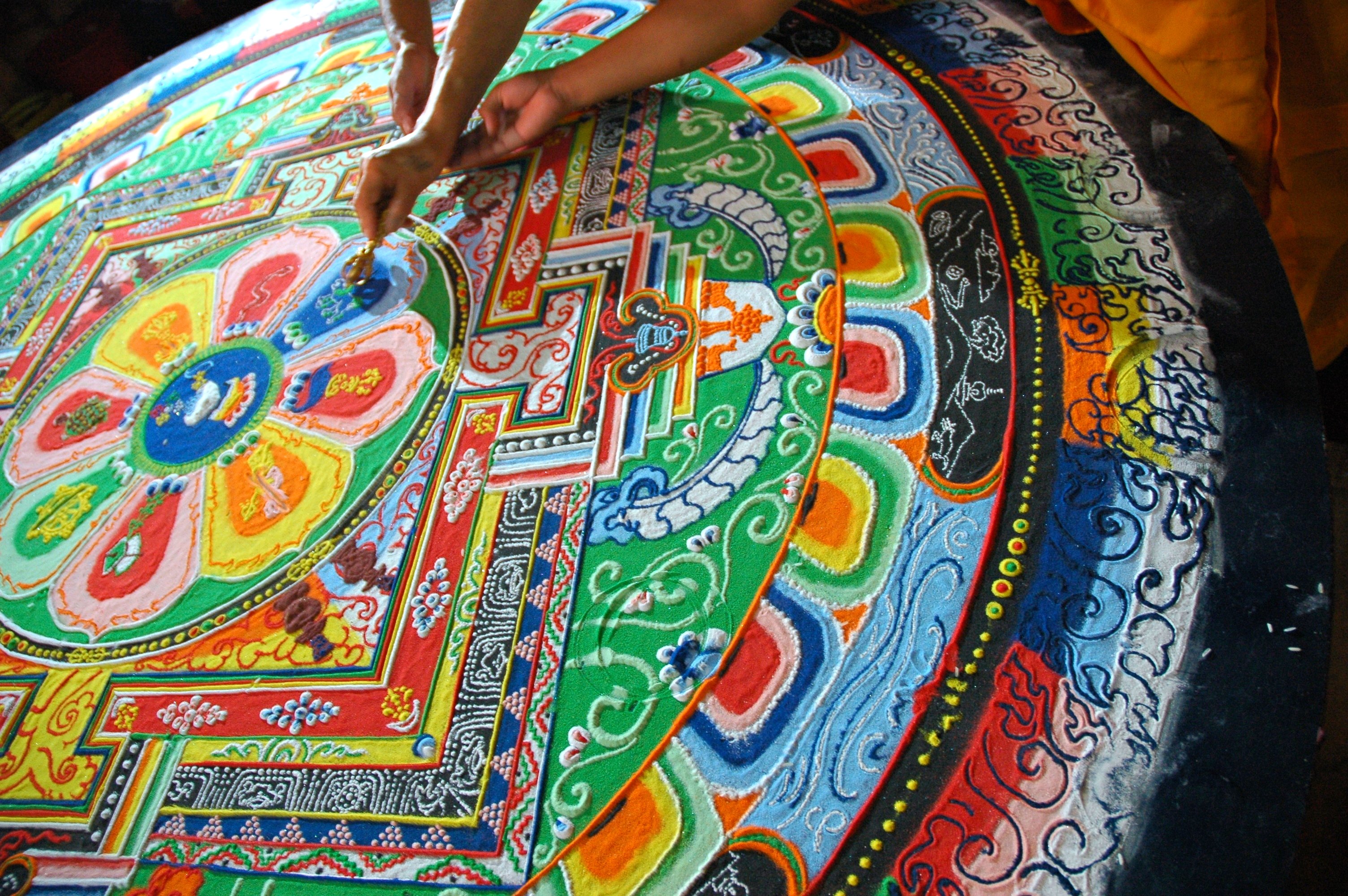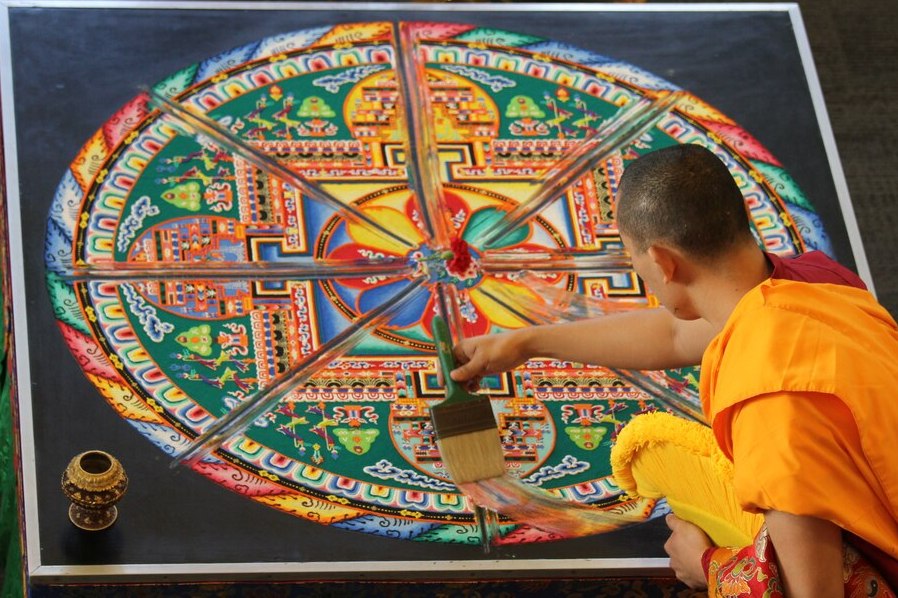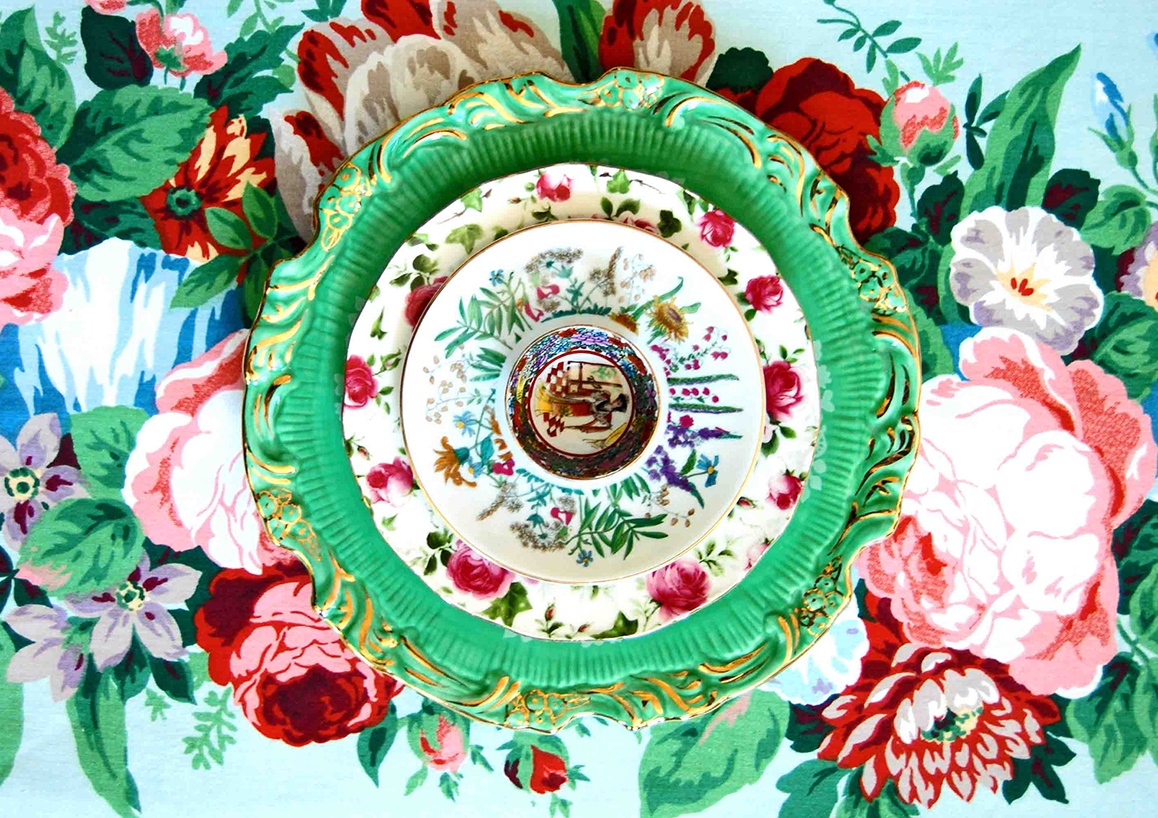Mandala Therapy

...heard birds singing through the noise of cars on the avenue, sensed fragrance of violets that a neighbor of mine was growing on her balcony and a recollection of Funtik from floor 5 and his tail evoked a flush of tenderness towards the shaggy monster.
Experts claim that nowadays mandala isn’t just a word, it is a current in fancy art therapy, instrument of becoming aware of inner self and a way to influence course of life events. Esoterics, on the other hand, compare mandala to a map of Universe and a process of its creation with purification of mind, soul and even body.
Mandalas exist as long as humankind does. Because every civilization tried to get closer to finding a key to Universe, find its centre and sense of life. There’s no such thing as two equal mandalas, they all differ in shape, traditions of composition and mission.
Certain curative effect of the ‘magic circle’ composition was in his due time observed by Swiss psychologist Carl Jung. Once, when experiencing strong emotions, he began drawing circles on a piece of paper. As soon as the paper was awash with ornate symbols, Jung experienced something similar to relief. Later, the psychologist advised his patients to illustrate own emotions in order to better explore own individuality and overcome complexes. Photo people.howstuffworks.com
Photo people.howstuffworks.com
Modern art psychologists confirm that creation of a mandala as well as its contemplation and exploration leads to becoming aware of oneself, calms thoughts and nerves which is, after all, what all spiritual practicians aim for. It is also possible to quickly relieve stress using “magic circles”. “For that you should concentrate on your problems and plait, draw or lay out your mandala using stuff at hand. However, after that the creation should be destroyed together with all negative meaning you’ve put in it,” – suggests Julia Bilchuk, expert in mandala plaiting.
Read also: Duduk: music evocating love
Plaiting isn’t the only way to create the sacred symbol. It can be draw, embroidered, engraved in wood, gathered of sand or colorful powder, impressed on metal, carved in stone, assembled from precious stones or rose petals. It can serve as an interior decoration, as a protective amulet or have a certain purpose, for instance, help make a goal achieved, exercise psychological support or channel invisible processes that occur to a person to a necessary direction. Photo springfieldmuseums.org
Photo springfieldmuseums.org
Mitsuru Ohoba has been creating his mandalas for many years. He often writes the word “peace” in various languages of the world. He starts in the centre and keeps spiraling on. The Japanese believes that this way he helps people all around the world become a little more kind towards each other, feel somebody else’s pain and find common grounds in conflict situations.
The Japanese sat down to his first work full of disturbing thoughts and sadness. He was upset with his job, family and relationships with friends. But when he finished writing his “magic circle”, he experienced happiness, both emotional and physical lift. “My sadness was gone and I saw our world full of bright colors and joy”, - Mitsuru Ooba shares.
Photo ajc.com
There are mandalas of simple gratitude among his works. In a close spiral he carefully writes these words: “Thank you, Water, Earth, Air and Nature”. The man found allies all over the world. Dozens of men and women, different in religious believes and social statuses, who live on different continents, annually gather to write shared peace mandala. They believe that their good intentions will be able to make this world brighter, more positive and comfortable for everyone.
Read also: Belgian Lace: Waltz of a Thousand Threads
Spanish artist Pilar Albarracin has an unusual approach to composition of mandalas. She uses panties for her sacral paintings. This is all because Pilar deciphers the word “mandala” as “community” and based on this meaning she composes her works. According to her, every element of underwear has a story of an individual hidden in it and, when gathered, such stories make for the very “community” we’ve mentioned. The artist never replicates her paintings and names every work in honor of the girl, whose underwear she uses for it.
Radio parts and computer accessories are used by British artist Julian Leonard to assemble his mandalas. He solders together various details to create unique ornate patterns. According to him, he developed affection towards sacred symbols because of their symmetry, which he believes to be tangible incarnation of magic.
Argentine artist Lula Aldunate creates mandalas using plates and bright fabric. She finds material for her works on rag fairs. Then she cleans dishes and assembles compositions. After every finished work Lula feel surge of energy and power, so she says.
One of the most famous mandalas is a work of Canadian artist Agnes Dumouchel. She created it using several thousands reddish-pink apples, black soil and vegetation. It took Agnes five days to do the job. Photo kknews.сс
Photo kknews.сс
Should you be attentive, images of mandala can be seen in nearly every object. Intricate sacral pattern peeps out of Armenian khachkars, from underneath domes of mosques, of Moroccan mosaics, coves of churches, stained-glass windows of Notre Dame de Paris, steering wheels on ships, medieval chandeliers, water mills, Persian carpets, fishing nets, umbrellas, kerchiefs from Pavlovsky Posad, ancient coins, Advent crowns, collars of Maasai people, construction of stadiums, fountains and Sufi dervish dance.
Read also: Mosque: Shrine of the Muslim world
Among the most famous constructions created in the shape of mandala there are Stonehenndge in the UK, Eye of the Sahara in Mauritania, Temple of Heaven in China, a complex on Khortytsia Island in Ukraine, gardens of the future and super trees in Singapore, round settlements in Denmark, Morai in Sacred Valley of the Incas and Rankapura temple complex in India.
Cover photo etsy.com





















